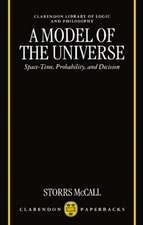Identification of Materials: Via Physical Properties Chemical Tests and Microscopy
Autor Anton A. Benedetti-Pichleren Limba Engleză Paperback – 20 noi 2013
Preț: 404.67 lei
Nou
Puncte Express: 607
Preț estimativ în valută:
77.46€ • 84.17$ • 65.11£
77.46€ • 84.17$ • 65.11£
Carte tipărită la comandă
Livrare economică 21 aprilie-05 mai
Preluare comenzi: 021 569.72.76
Specificații
ISBN-13: 9783709181096
ISBN-10: 3709181097
Pagini: 512
Ilustrații: XI, 492 p.
Dimensiuni: 170 x 244 x 27 mm
Greutate: 0.81 kg
Ediția:Softcover reprint of the original 1st ed. 1964
Editura: SPRINGER VIENNA
Colecția Springer
Locul publicării:Vienna, Austria
ISBN-10: 3709181097
Pagini: 512
Ilustrații: XI, 492 p.
Dimensiuni: 170 x 244 x 27 mm
Greutate: 0.81 kg
Ediția:Softcover reprint of the original 1st ed. 1964
Editura: SPRINGER VIENNA
Colecția Springer
Locul publicării:Vienna, Austria
Public țintă
ResearchCuprins
The Task of Qualitative Analysis.- Principles and Definitions.- Specificity and Sensitivity.- The Method of Qualitative Analysis.- The Minimum Size of the Sample for Chemical Analysis.- Properties Affected by the Size of the System.- Apparatus, Technique, and Scale of Work.- Observation of Properties.- Selection of Procedure.- I: Technique of Observation and Manipulation.- Use of Optical Aids.- Technique of Experimentation and Observation.- II: Systematic Analysis: Choice of Materials and Cleaning.- Sampling for Analysis.- Systematic Procedure of Analysis.- Test Solutions.- Preparation of Unknowns.- Reagents.- Table 1. Color of Some Inorganic Substances.- Table 2. Substances Crystallizing in the Cubic System.- Elements.- Inorganic Compounds.- Organic Compounds.- Table 3. Substances Crystallizing in the Hexagonal System.- Elements.- Inorganic Compounds.- Organic Compounds.- Table 4. List of Common Inorganic Compounds in the Order of Their Melting Points.- Table 5. Inorganic Substances that Sublime, Arranged According to Color.- Table 6. Inorganic Solids which Burst into Flame when Heated in Air, Ignition Temperatures in Centigrades.- Table 7. List of Solids which Explode on Heating.- Inorganic Compounds.- Organic Compounds.- Table 8. Inorganic Solids Moderately Soluble in Water at Room Temperature.- Literature.- General Reference Books.- Theory of Chemical Analysis.- Reagents.- Standard Tests and Procedures of Qualitative Analysis.- Chromatography and Ion Exchange.- Instrumental Methods.- Chemical Microscopy.- Slide Tests and Spot Tests.- Micro Analysis and Microtechnique.- Miscellaneous Applications of Microtechnique.- Mineralogy.- Journals.- Reports.- Theses.- Unpublished Experiments.- Private Communications.- Meetings.- Addresses.











